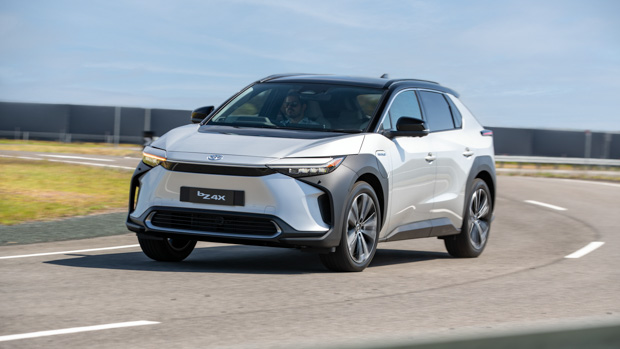-
Car Reviews
- Car News
-
Car Comparisons
Latest comparisons
- Chasing Deals
Weeks-long battery ageing process intended to reach tough Toyota target of retaining 90 percent of original battery capacity 10 years after a BZ4X is built
As the February 2024 release date of the Toyota BZ4X electric midsize SUV draws nearer, details of the car’s Australian-market battery have been revealed.
Chasing Cars was invited to tour the Himeji, Japan battery factory that will provide the nickel-manganese cobalt battery pack for the Australian-spec BZ4X from launch.
A former Panasonic television factory, the Himeji plant of Prime Planet Energy & Solutions (PPES) was converted to build full-EV batteries at scale in 2019 in a joint venture owned 51 percent by Toyota and 49 percent by Panasonic.
The repurposed plant in southeast Japan continues to ramp up, and its focus since its electrode formation, battery assembly and battery formation lines opened in 2021 has been on reaching Toyota’s quality and longevity requirements.
In October 2021, Toyota revealed an ambitious target: that the BZ4X, a Tesla Model Y rival, would retain 90 percent of its original battery capacity 10 years after it was built.
Operations at the Himeji plant are calibrated in part to hit this target. PPES and Toyota executives are particularly proud of a 20-day, 11-step charging and ageing process that is the culmination of a battery’s manufacturing journey.
“This contributes to the stabilisation of battery performance,” Prime Planet’s Takenori Kimura told Chasing Cars. “In an initial charge phase, a chemical reaction takes place inside the battery. The output following can contribute to the longer-term longevity of battery life.”
Within the multi-storey Himeji plant, operators supervise machines that coat and tight coil electrodes and combine them into cell banks, before cells are conveyed back and forth between charging, ageing and discharging states for nearly three weeks.
Then, the bedded-in batteries destined for Australian BZ4X customers are ready to be shipped 280km from the Himeji plant to Toyota’s BZ4X factory in Aichi, Japan.
Toyota Australia’s vice president of sales and marketing Sean Hanley suggested that strengthening long-term battery life would bolster spotty EV residual values.
“While we face the same residual value challenges as any other BEV manufacturer, we will be able to [have a clear view] of the longevity and quality of these batteries, and amortise the cost over some period of time. We have a good starting point.
“No two batteries are the same. The batteries produced here are a cut above those offered by many others in the market in terms of quality, performance, safety, and reliability.”
PPES, led by Toyota veteran executive Hiroaki Koda, has a growing profile within the wider Toyota group of companies.
As well as operating the Himeji plant, PPES has been tasked with converting some existing Toyota engine factories and acquiring new facilities to support Toyota’s growing EV battery requirements. The carmaker plans to manufacture 3.5 million EVs annually by 2030.
The growing footprint of PPES provides Toyota with a majority-owned competitor to battery-manufacturing giants like China’s CATL and BYD – though Toyota is also purchasing batteries from both of those suppliers to supplement PPES’s output.
The PPES Himeji plant produces batteries for Toyota and other manufacturers in approximately equal measure. A number of Toyota-specific battery production lines currently supply batteries for 80,000 BZ4X SUVs per year – about 5.8GWh in capacity per Chasing Cars estimates.
Toyota is pouring investment into the Himeji plant to more than double its capacity to build batteries specifically for Toyota EV models, with another 7GWh capacity set to go online in 2024 – taking total Toyota battery capacity at Himeji to about 13GWh.
That circa-13GWh capacity is understood to service the manufacture of about 160,000 BZ4X units – averaging 81.2kWh per battery – which could suggest the BZ4X might gain a longer-range battery option in future.
PPES says that battery production at Himeji will “sequentially increase” after 2024 – and there appeared to be significant areas of unused space at the plant that should allow this to occur.
The BZ4X is Toyota’s first entry into the fully-electric segment in Australia. It is a midsize SUV similar in size to a RAV4, available with single- or dual-motor AWD formats based around a 72kWh-total, 64kWh-usable battery.
From its launch in Australia, the BZ4X will pack in batteries built from scratch from the PPES Himeji plant, though other suppliers could be used in future depending on requirements.
Latest news
About Chasing cars
Chasing Cars reviews are 100% independent.
Because we are powered by Budget Direct Insurance, we don’t receive advertising or sales revenue from car manufacturers.
We’re truly independent – giving you Australia’s best car reviews.






